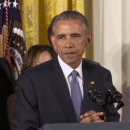California can’t solve its housing shortages with homes that are essentially built to burn.
by Tiffany Yap
As San Diego County prepares for another wildfire season, California is re-evaluating its approach to fire risk. But have county officials and state leaders drawn the right lessons from last year’s tragic conflagrations in Paradise and Malibu?
Fire experts applauded when a new report from Gov. Gavin Newsom’s wildfire strike force rightly noted two key contributors to our state’s fire risk: Both climate change and the construction of more homes in the wildland-urban interface “magnify the wildfire threat and place substantially more people and property at risk than ever before.”
A new University of California study mirrored that report’s conclusions, finding that housing and human infrastructure in fire-prone wilderness areas are the main drivers of fire ignitions and structure loss. To reduce this risk, the governor’s strike force recommended building homes away from wildfire-prone areas and retrofitting existing homes with fire-reduction features.
Troublingly, Newsom himself expressed reservations about curbing sprawl development in fire-prone wilderness areas. The governor worried it might violate the “wild and pioneering spirit” of Californians.
Newsom has rightly committed to averting further tragedy from fire, but to do so he must heed his own experts and avoid giving cover to local officials who want to ignore how poorly planned development feeds fire dangers.
In San Diego, the Board of Supervisors has disregarded fire risk to an astonishing degree. Supervisors have recently approved or will soon consider the approval of eight large developments that would collectively build almost 14,000 homes in places naturally prone to fire.
These developments, including Newland Sierra and the Otay Ranch Villages, would be located in or near areas where fires have historically burned. State agencies like Cal Fire have identified these areas as posing a very high fire threat to people.
Based on Census Bureau estimates, these eight projects could put about 40,000 new residents at risk, not to mention the risk to firefighters and first responders who will be called on to protect lives and homes when the next fires hit.
County officials aren’t alone in approving such risky developments. With the Fanita Ranch project, the city of Santee is considering the construction of about 3,000 homes with almost 9,000 residents within areas designated by Cal Fire as very high fire hazard zones.
Sprawl development has many harmful consequences, from destruction of wildlife habitat to increased air pollution from long commutes. But one of its worst outcomes is heightened fire risk.
The developments in San Diego County would be built in areas dominated by chaparral, sage scrub and grasslands. These native California habitats are adapted to survive fires, but when fires occur too frequently, indigenous plants are replaced by non-native grasses that further increase fire threat.
Putting houses in the heart of fire country doesn’t just put people in harm’s way. It also increases the risk of fires starting. Studies have found that 97 percent of wildfires in Southern California’s Mediterranean landscapes are ignited by human sources like power lines and equipment sparks.
Climate change is ramping up the threat. The state is getting hotter and drier, creating ideal fire conditions, as scientists explained in the federal government’s 2018 National Climate Assessment.
None of this should be news to San Diego County officials.
Nearly 1,000 homes have burned every year in Southern California since 2000. The county has seen big fires, including the 2014 Cocos Fire, which burned in and around areas where developers now want to build two of the planned projects — the Valiano development and Harmony Grove Village South.
In their defense, county officials have pointed to fire-mitigation practices built into these projects. But these measures will not be enough to protect the people who move here.
Even the best mitigation can’t make a development fire-proof. Homes can add fuel to fires. Even with state-required fire-resistant roofing and vents, property owners must be vigilant by maintaining defensible space and keeping flammable materials a safe distance away from homes.
Despite false claims by the Trump administration, more logging won’t stop fires or reduce such threats, and neither will clear-cutting chaparral. Instead, we need better land-use planning that puts community safety first by recognizing that California ecosystems — including those in San Diego — will continue to experience fires.
Wildfires are natural processes in the state. To protect families, firefighters and native biodiversity, politicians have to stop letting developers build in areas prone to blazes. California can’t solve its housing shortages with homes that are essentially built to burn.
Tiffany Yap is a scientist at the Center for Biological Diversity, based in Oakland.
First appeared on Voiceofsandiego.org


 (909) 335-8100 ·
(909) 335-8100 ·  (909) 335-6777
(909) 335-6777 Email:
Email: